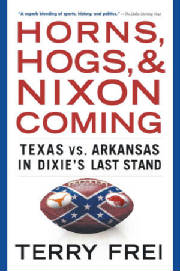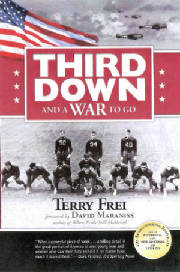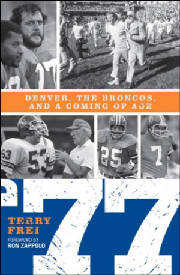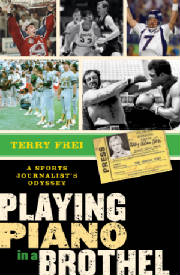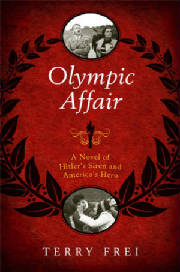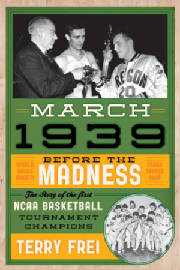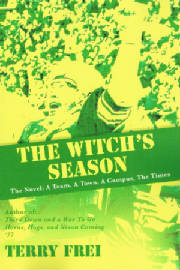February 4, 2024
The
Avalanche face the Rangers Monday night at Madison Square Garden, and among the matchups will be one between former Colorado
teammates – and roommates – Joe Sakic and Chris Drury.
They
celebrated winning the Stanley Cup together in 2001 with the Avalanche, and they’re now two of the three members of
that team who are top-of-the-organization NHL executives. Sakic was promoted from general manager to president of hockey operations
with the Avalanche last July. Drury, once the Rangers' captain and later assistant GM, moved up to become president and GM
of the Rangers in May 2021. Rob Blake is the Kings' vice president and GM.
Drury spent only four seasons with the Avalanche, winning
the Calder Trophy in 1999. He had 85 goals and 137 assists in four regular seasons for Colorado, but was better known for
his timely playoff scoring. He had 26 goals and 24 assists in 80 postseason games, and his 2002 trade to Calgary was both
panned at the time and beyond. He and Stephane Yelle went to the Flames for Derek Morris, Dean McAmmond and Jeff Shantz.
That trade was the one major mistake in Pierre Lacroix’s otherwise magnificent career as Avs GM.
Drury, rightly, initially was furious at being blindsided by the deal. He later accepted it as best for his career, given
the Avalanche's 1-2 punch of Sakic and Peter Forsberg at center, his preferred position.
Sakic
was Drury’s first roommate on the road when he joined the Avs, and the two got along great. Sakic even let Drury have
the power of the TV remote control in the room much of the time — something most veterans would never give up
to a "kid."
I first spoke with Drury in April 1998, when he was a senior at Boston University
and the Avalanche traveled to Boston to meet the Bruins. He had just finished his college career with a loss to New Hampshire
in the NCAA quarterfinals, and it was a week before he was named the winner of the Hobey Baker Memorial Award as NCAA hockey’s
top player.
I was surprised that the team hadn’t tried to set up a meeting when the
Avalanche was in Boston, and that was a foreshadowing of how they would take him for granted down the road.
The Nordiques drafted him in 1994, after he graduated at Fairfield Prep in Connecticut, shortly after Lacroix
took over as general manager, and the organization watched and waited through his career at BU.
“I’ve
followed them a lot,” Drury told me in Boston. “But it’s got more to do with them being such a great
team than the fact that they drafted me.”
At the time, despite his accomplishments in college
hockey, Drury was best known for helping lead the team from Trumbull, Connecticut, to the Little League World Series championship
in August 1989. His team’s starting catcher, Drury doubled as a pitcher and was on the mound as Trumbull shocked
the heavily favored team from Taiwan—which we all suspected had players old enough to legally drink beer in the
Williamsport bars—in the championship game.
In the ensuing years, ESPN and other
networks carrying Avalanche games showed the clip of a chunky Drury pitching, spitting, and jumping in the air after the final
out roughly as many times as the stock footage of Red Wings–Avalanche mayhem at the height of the rivalry.
“We knew we weren’t supposed to win,” Drury told me. “I mean, we knew the combined
scores of the past few championship games before that was 100–3 or something like that. Then you just looked at them
physically, and there was no comparison between them and us. None. Nobody gave us a shot. I think we had looked at the other
Americans and we were hoping, ‘Gee, we hope we don’t lose that bad.’”
Drury,
then 5-foot-1 and 126 pounds, knew a worldwide television audience was watching. In the United States, Al Trautwig and former
Baltimore Orioles pitcher Jim Palmer were the announcers for the game broadcast on ABC’s “Wide World of Sports.”
“I was pretty excited when I went out to the mound,” Drury said. “We
had one other pitcher and we each pitched eight of our 16 games, but he had started the first one, so I guess you could
say I was our number two pitcher. There were 40,000 people there, and most of them and most of the country wanted us to win,
and that really got the adrenaline going.”
Taiwan led 1–0 after the first inning, but
a two-run bottom of the third gave the Americans a 2–1 lead halfway through the scheduled six-inning game.
“That seemed like a miracle in its own right,” Drury said. “People were happy that
they didn’t have to leave early because we were getting killed.”
Ken Martin, Drury’s
best friend both then and later, drove in a run with a single and later hit a home run. Drury also drove in a run and ended up
jumping up and down when he got the final out. He had thrown a five-hitter.
“I think
part of it was that in the years before, the U.S. teams had worked it so they’d have their big, hard-throwing kid ready
for the championship game,” Drury said. “I didn’t even have a fastball. I threw curveballs and changeups
and I think that threw them off. Plus, they had been so dominating, I don’t think they were ready for us.”
After the upset in the championship game, the Trumbull boys were invited to the 1989 World Series, and
I was watching from the press box as Drury threw out the ceremonial first pitch before Game 2 in Oakland—two days before
the earthquake struck at Game 3 in San Francisco.
They also appeared on “Good Morning America” and at the White House, where President
Bush honored them.
So what happened to Drury’s baseball career?
“After
that, I was playing both baseball, mostly as a catcher, and hockey,” Drury said. “Actually, I got hurt playing
hockey my junior year of high school and wasn’t able to play baseball for a year, so it worked out that the decision
was kind of made for me. I got checked in a hockey game and broke my wrist. I was able to play hockey with my hand in a cast,
but not baseball.”
So he focused on hockey and had the four-year run with the Avalanche before
moving on to Calgary, Buffalo and the Rangers, finishing up in 2011.
“The way I look
at it, my four years there in Colorado were like I went for my master’s degree in hockey,” he told me during the
2007 Eastern Conference Finals in Buffalo. “I had four years in college and four years there, and to watch those guys
day in and day out — obviously also including Patrick (Roy) and Adam (Foote) and Rob (Blake) …I could just sit
there and watch, not say anything and absorb everything. It was an unbelievable four years of learning.”
By the end of Drury’s career, I had come around to the view that the trade was at least defensible.
He told me he came to realize he wasn’t displacing either Sakic or Forsberg and skating as the third-line center wasn’t
a palatable option, either competitively or otherwise. So he was playing wing with the Avs. After leaving Colorado,
he moved to center and thrived.
His teams have a funny way of winning
championships. The 30-16-3 Rangers are leading the Metropolitan Division. An Avalanche-Rangers Stanley Cup Final likely would
be a great show.
Portions of this commentary appeared
in Playing Piano in a Brothel and on Colorado Hockey Now in December 2021.


